Best GBA Games: Top 25 Game Boy Advance Titles
Nintendo’s recipe for handheld success was a simple but proven formula by the time that the Game Boy Advance hit the market in the early-2000s. By mixing an impressive amount of mobile power into an attractive frame and then seasoning it with a constant stream of quality titles, the end result was bound to be a winner with fans. More than 1,500 games were released in total for the system, but if you could only pick 25 of them for your personal Nintendo handheld hall of fame, the titles below would be worth considering for entry. We’ve listed our picks for the best GBA games in alphabetical order.
More Nintendo best lists
As a successor to the Game Boy and the Game Boy Color, the Game Boy Advance stuck to the script of its predecessors, but it wasn’t afraid to add a few new ideas to the mix as well. It was able to link up with the GameCube for some fascinating asynchronous gaming experiences and its hardware was a notable step up from anything else on the market at the time, especially after the SP fixed some annoyances from its predecessor. The Game Boy Advance SP is our pick for the best handheld game console ever made. More importantly though, the Game Boy Advance had a killer selection of first and third-party games, with the likes of Capcom, Konami, and Square throwing their support behind the ergonomically-excellent console.
Mục lục bài viết
Advance Wars + Advance Wars 2
 Advance Wars
Advance Wars
Anyone who believed that strategy games could only function on PC with a mouse-and-keyboard setup had clearly never played Nintendo’s superb Advance Wars series. Turn-based tactical gameplay of a more accessible breed, Advance Wars treated the entire world as a battlefront as various armies went to war. It was a deceptively easy game to get into, but beneath the cute visuals and simple numbers, there was an addictive layer of strategy that rewarded players who fought with cunning and guile.
By the time that Advance Wars 2 rolled around, developer Intelligent Systems knew exactly where to expand on the game’s formula and which technical nuts to tighten to create a perfect blend of tactics for military commanders on the move. Fans have been badgering Nintendo for a new Advance Wars game, and while a brand-new sequel isn’t in development, a remaster of the first two games should provide some relief when it marches out in 2022.
Read our Advance Wars review.
Astro Boy: The Omega Factor
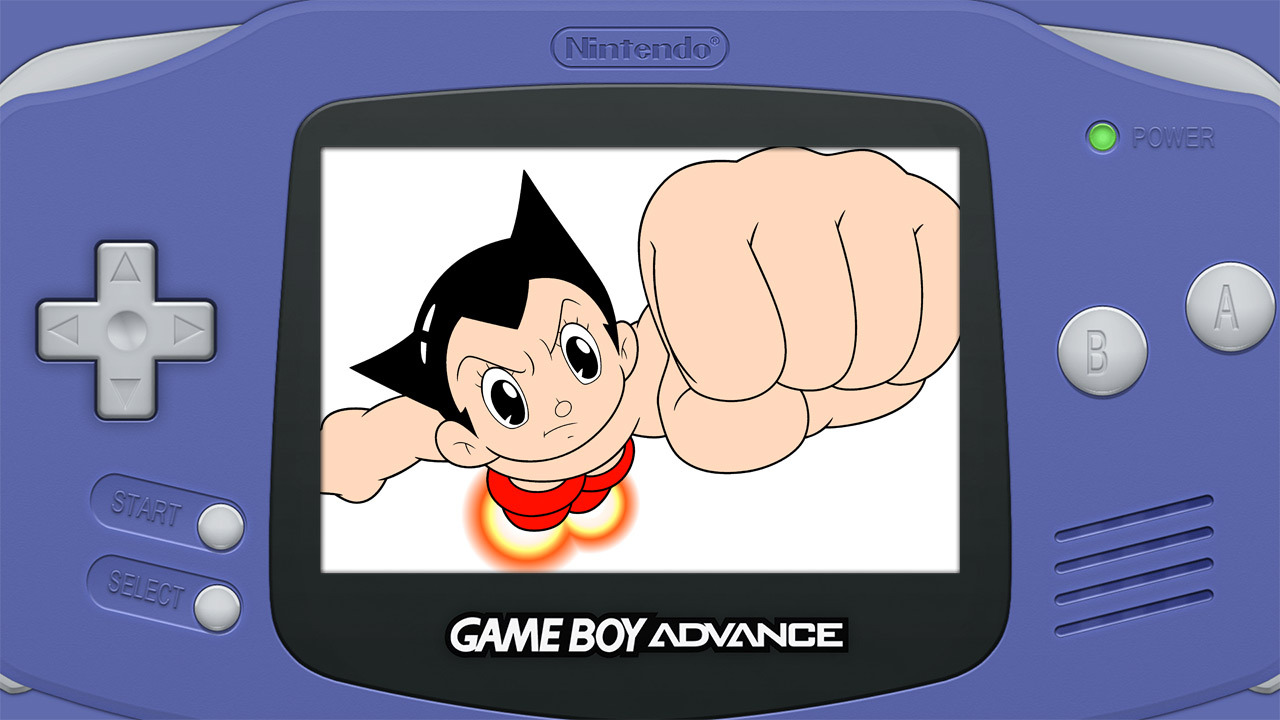 Astro Boy: The Omega Factor
Astro Boy: The Omega Factor
Osamu Tezuka’s legendary Astro Boy was no stranger to video games by the time that this take on the beloved character hit the market in 2003, but Omega Factor is arguably the best of the bunch. An uncomplicated beat ’em-up where you turn various threats into scrap metal, Omega Factor’s triple-threat appeal boiled down to gloriously over-the-top boss fights, attention-grabbing graphics, and gameplay that allowed Astro to unleash a range of terrific attacks once his EX gauge had been charged up.
With a surprisingly solid storyline and some gameplay variety thrown in for good measure, developers Treasure and Hitmaker did justice to one of Japan’s finest contributions to pop culture.
Read our Astro Boy: The Omega Factor review.
Castlevania: Aria Of Sorrow
 Castlevania: Aria of Sorrow
Castlevania: Aria of Sorrow
The Game Boy Advance was Castlevania at its very best, as that era of handheld gaming gave rise to a trilogy of superb games. Aria of Sorrow stands tall above them all for its mix of Castlevania gameplay essentials with a superb soundtrack, a stacked arsenal of weapons, and of course, the ingenious Tactical Soul system that made protagonist Soma Cruz a force to be reckoned with. Pure riveting excellence from start to finish, Soma’s journey through Dracula’s castle is the quintessential Castlevania of its time.
Read our Castlevania: Aria Of Sorrow review.
Double Dragon Advance
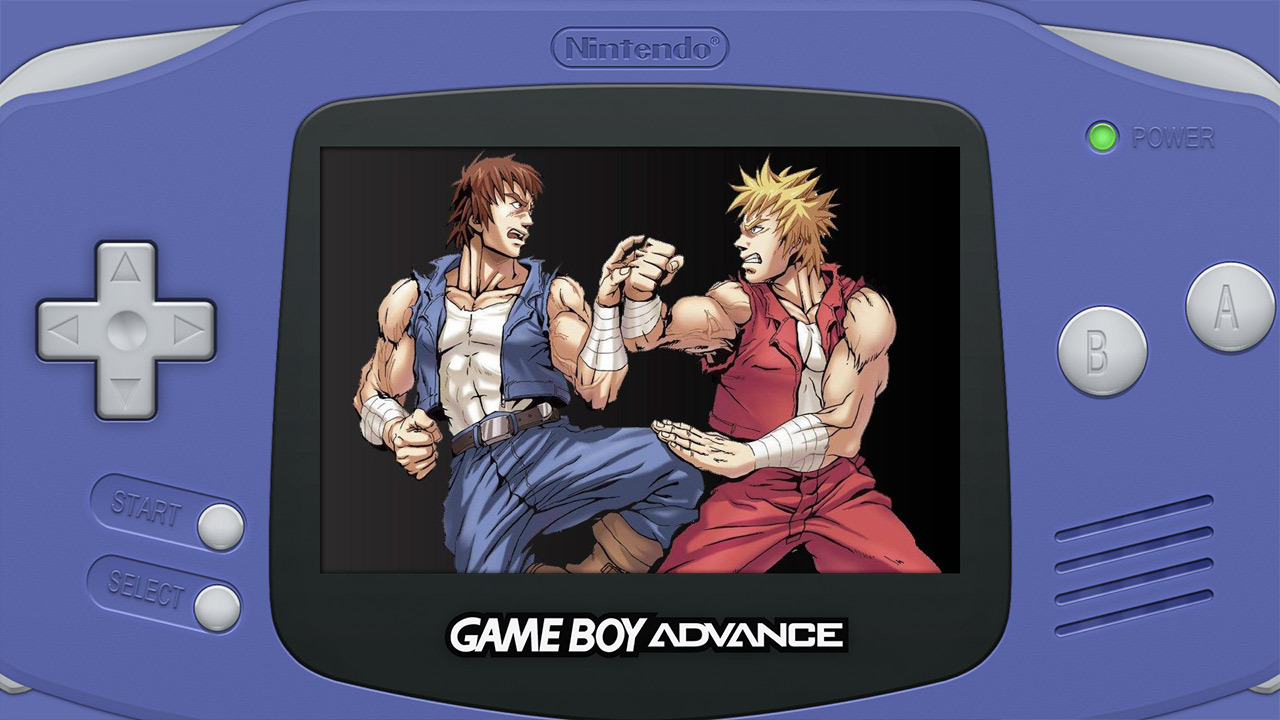 Double Dragon Advance
Double Dragon Advance
One of the best–and sadly forgotten–beat-’em-up games to ever grace an arcade screen or a home console, Double Dragon’s two-fisted action was at its best on the Game Boy Advance. Developer Million re-tuned the original arcade game, slapped in four extra stages, and tweaked the combat to make it a more satisfying game overall. Even better with a second player joining you for some melee mania, Double Dragon Advance was an energetic throwdown on the Nintendo handheld.
Read our Double Dragon Advance review.
Drill Dozer
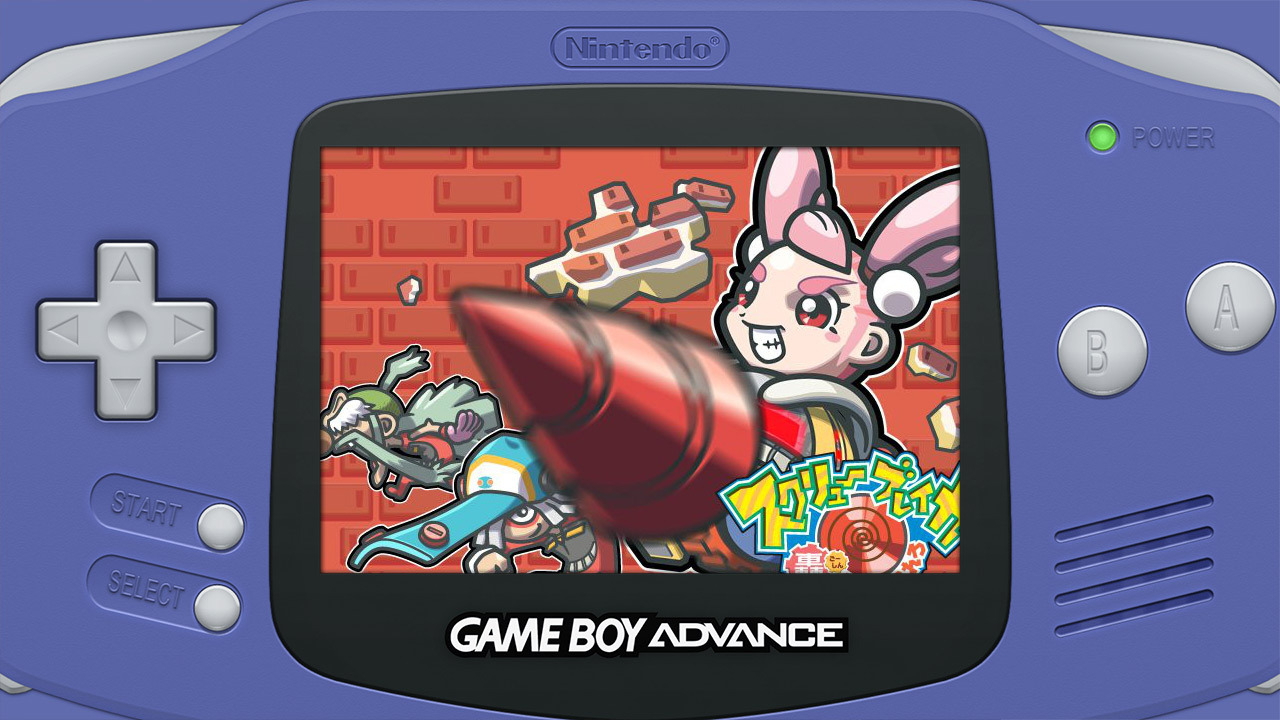 Drill Dozer
Drill Dozer
Between Pokemon games, Game Freak has proven it can pump out wildly imaginative digital diversions such as Pocket Card Jockey and Tambo The Badass Elephant. Before all of those games came along though, Game Freak was dropping titles such as Drill Dozer into the market, an action-packed platformer with some of the best sound design around. It also looked great, its pacing was excellently executed, and every level was jam-packed with extra treasure to uncover along the way.
Read our Drill Dozer review.
Final Fantasy Tactics Advance
 Final Fantasy Tactics Advance
Final Fantasy Tactics Advance
How Square managed to fit such a lengthy game into the tight confines of a Game Boy Advance cartridge is something that must have required some black magic. The PlayStation Final Fantasy Tactics game was an absolute treat when it first came out, and this GBA version proved to be a superior successor with a number of enhancements under its belt. A completely new standalone story, more jobs than you could shake a Moogle at, and the introduction of Judges to the portable world of Ivalice, made this spin-off constantly engaging, and a perfect slice of just-one-more-turn action during bus rides and brief breaks.
Final Fantasy VI Advance
 Final Fantasy VI Advance
Final Fantasy VI Advance
In BFF7 era of Square’s long-running RPG series–that’s Before Final Fantasy VII–the sixth chapter in the mainline series is often considered the pinnacle of classic Final Fantasy. It’s not hard to see why, as Square’s SNES hit from 1994 is a masterclass in storytelling and technical wizardry. Ported over to the Game Boy Advance, this version of the game added tweaks, extra Espers, new spells, and a dungeon that was designed to help ease the grind, making for a competent update.
It’s a testament then to the strengths of Final Fantasy VI that even with a modest number of enhancements, that it was still one of the best RPGs on Nintendo’s handheld. A masterpiece then and still worth playing today, this was old-school Final Fantasy at its very best.
Read our Final Fantasy VI Advance review.
Fire Emblem: The Sacred Stones
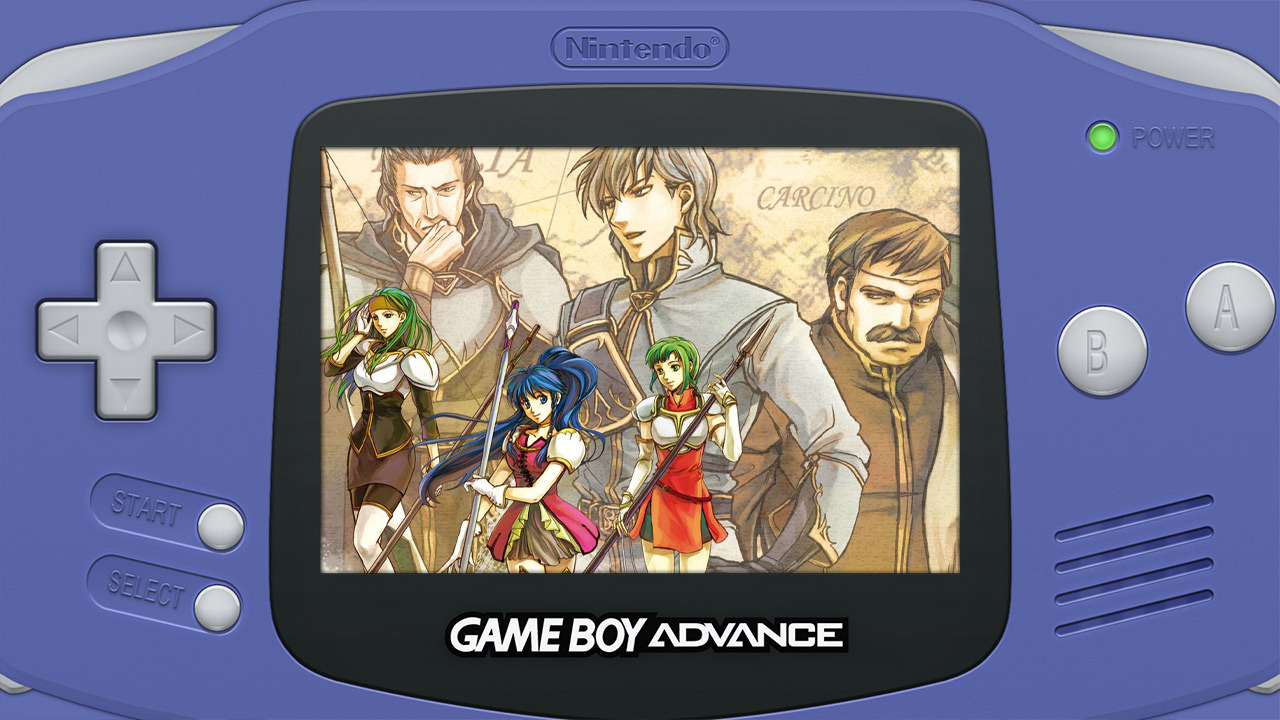 Fire Emblem: The Sacred Stones
Fire Emblem: The Sacred Stones
The second Fire Emblem game to be given an international release–and the eighth game in the series in its native Japan–The Sacred Stones was notable for being the final Fire Emblem on the Game Boy Advance. While it didn’t massively shake anything up in the formula–aside from some more player-choice and branching class progression–Sacred Stones was still a reliably polished entry with an epic storyline, strategic gameplay, and bright graphics.
Read our Fire Emblem: The Sacred Stones review.
Golden Sun + Golden Sun: The Lost Chapter
 Golden Sun
Golden Sun
One of gaming’s most underrated RPGs, Golden Sun on the Game Boy Advance and its successor largely flew under the radar when they first arrived. While both games have admittedly taxing openings, pushing past those introductory grinds reveals pure RPG bliss. Visually decadent, memorable on the audio front, and jam-packed with uniquely rich gameplay features and a memorable cast, Golden Sun is a fantasy epic for the ages.
Kirby And The Amazing Mirror
 Kirby and the Amazing Mirror
Kirby and the Amazing Mirror
The first time Kirby hovered onto the Game Boy Advance, it was with a colorful remake of his NES adventures that was warmly-received. For his sophomore effort though, the pink bubble with cute attitude had a grander plan in mind that involved teaming up with his fellow Kirbies to save the day. A feature that worked best when you and three other friends linked up your Game Boy Advance consoles, Kirby and the Amazing Mirror is still a great Kirby adventure that uses its trademark gameplay to craft a fun tale with delightful mini-games, puzzles, and even some Metroidvania influences.
Read our Kirby And The Amazing Mirror review.
The Legend Of Zelda: The Minish Cap
 The Legend of Zelda: The Minish Cap
The Legend of Zelda: The Minish Cap
After dabbling with Ocarinas and wind-altering conductor batons, Link’s next adventure involved a talking hat by the name of Ezlo that could shrink him down in size and help explore the world of the Minish: bug-sized inhabitants who require some help from the hero in green. Minish Cap was your typical Zelda adventure, blending action and puzzles together while Link searched the land for artifacts of power that could help him out on his quest against memorable villains.
It also looked stunning on the Game Boy Advance, with the world around Link benefitting from the vibrant colors and adorable art design that defined the era of Wind Waker and would continue with several entries on the Nintendo DS.
Read our The Legend Of Zelda: The Minish Cap review.
The Legend of Zelda: A Link to the Past and Four Swords
 The Legend of Zelda: A Link to the Past and Four Swords
The Legend of Zelda: A Link to the Past and Four Swords
No matter the generation, Nintendo will never fail to capitalize on the nostalgic success of The Legend of Zelda. Years removed from his NES and SNES days, Link’s arrival on the Game Boy Advance looked better than ever and also benefitted from the console’s sound chip to give him more life in the vocal department. The real treat here though was Four Swords, a multiplayer quest that allowed for up to four friends–who each had to have their own separate copy of the game and a Game Boy Advance–to link up and take on a multiplayer-only quest.
It was an ambitious extra, but one that rewarded players with a new dungeon in A Link to the Past and bragging rights once they completed it.
Read our The Legend of Zelda: A Link to the Past and Four Swords review.
Mario Golf: Advance Tour
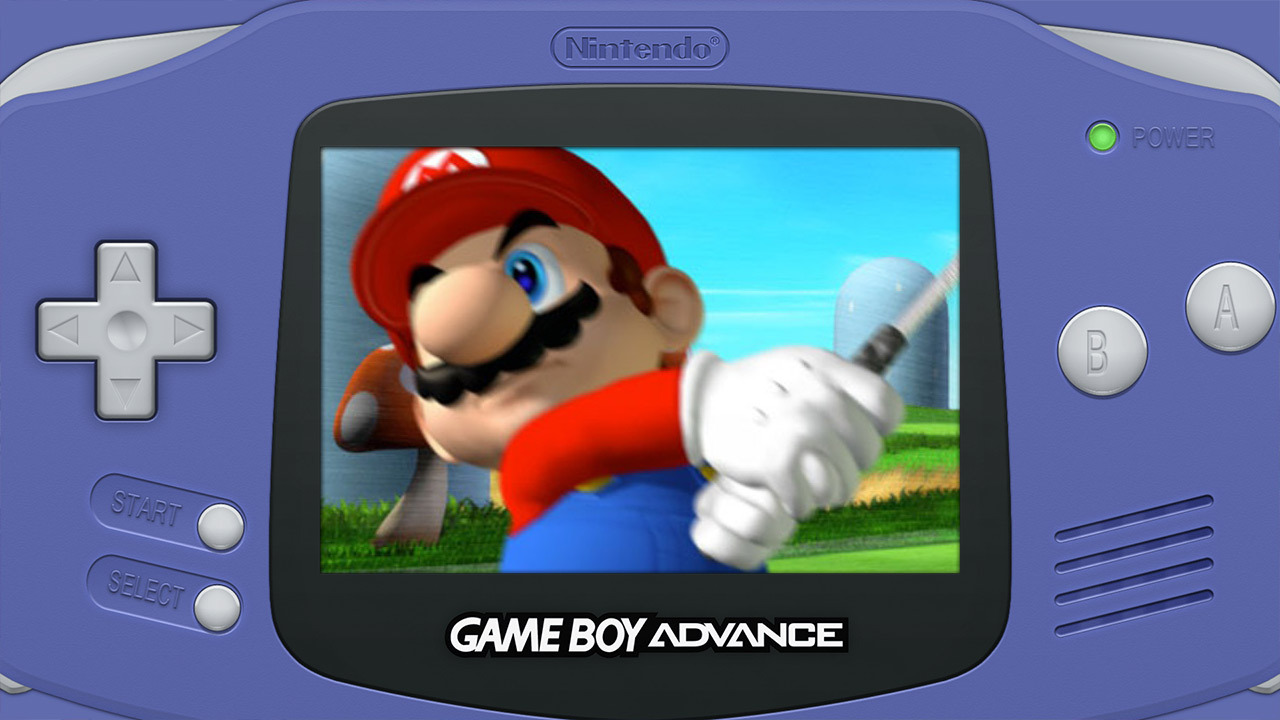 Mario Golf: Advance Tour
Mario Golf: Advance Tour
Mario Golf: Advance Tour is the type of game that would hit a hole-in-one even if it didn’t have Nintendo’s most bankable characters attached to it for brand recognition. A mechanically superb spin on golf that adds surprisingly great RPG elements to the mix, Mario Golf on the Game Boy Advance went the extra 18 holes with its extra mini-game modes, multiplayer options, and charming aesthetic when it teed off.
Mario Kart: Super Circuit
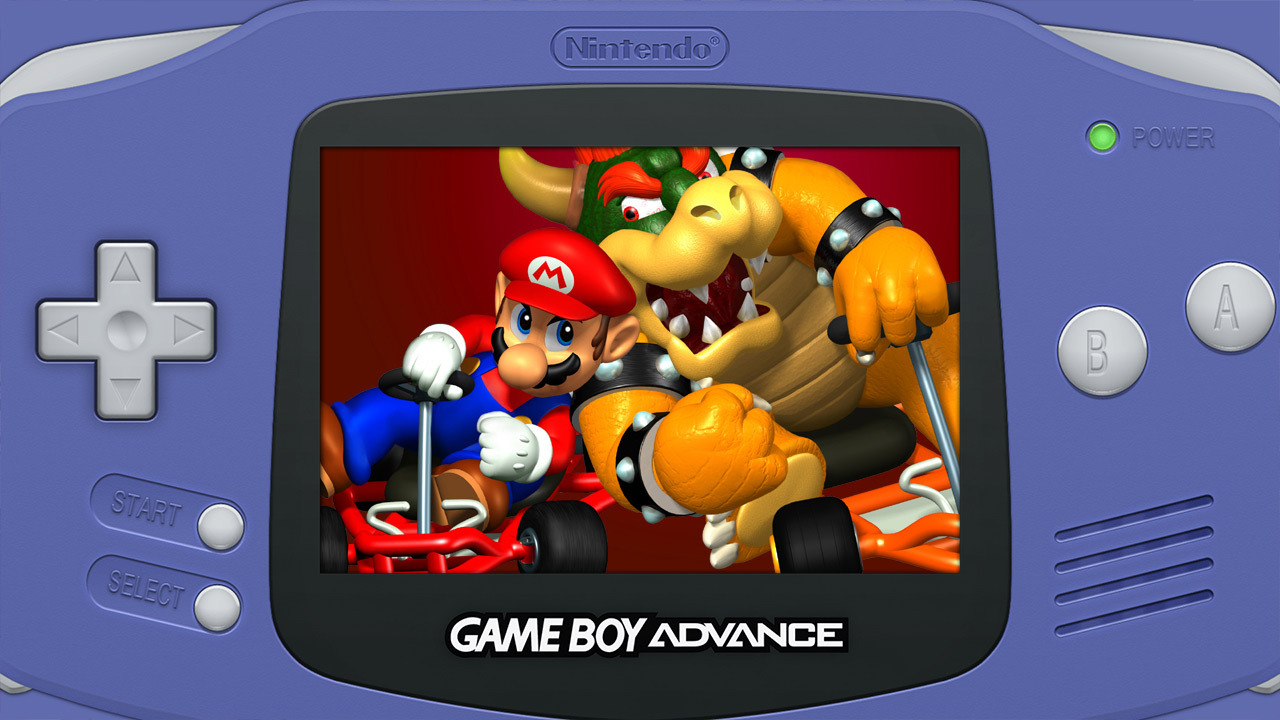 Mario Kart: Super Circuit
Mario Kart: Super Circuit
Mario Kart on the Game Boy Advance might not be a visual tour de force after all these years, but the game still has appeal in the areas that count. It has dozens of tracks to zip around, a solid roster of characters to burn rubber with, and it provides plenty of challenge across various difficulty levels. It may not have added anything new to the Mario Kart formula when it was first released, but it’s still a handheld version of Nintendo’s addictive kart-racing series that’s predictably brilliant with its familiar and fun takes on series staples.
Read our Mario Kart: Super Circuit review.
Mario and Luigi: Superstar Saga
 Mario and Luigi: Superstar Saga
Mario and Luigi: Superstar Saga
Mario was no stranger to games with an RPG focus, but Mario and Luigi: Superstar Saga holds a special place in the hearts of fans for its wickedly hilarious story and bonkers visuals. Mechanically though, the game is an absolute treat thanks to the appearance of Luigi, which adds an extra layer of fun to any combat encounter. The BeanBean Kingdom that players explored was whimsical, and the laugh-a-minute antics between Nintendo’s favorite brothers made for a uniquely weird RPG when it first came out in 2003.
Mario Vs. Donkey Kong
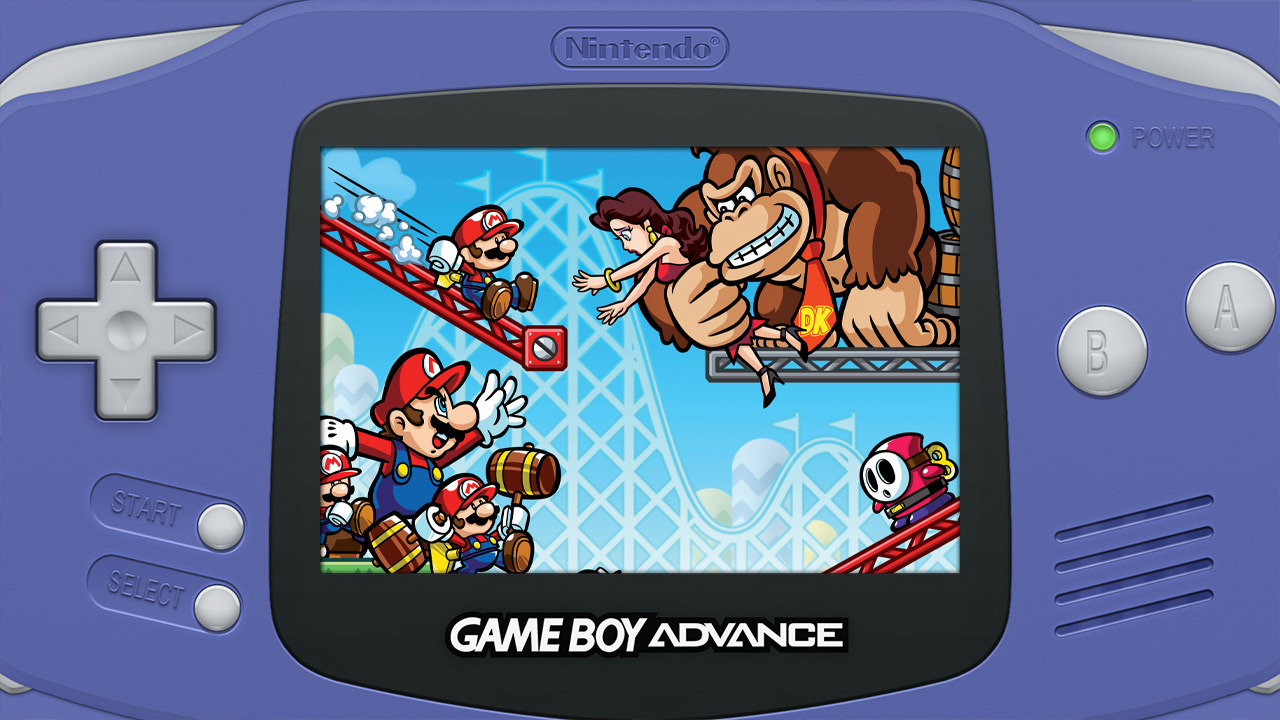 Mario vs. Donkey Kong
Mario vs. Donkey Kong
Mario and Donkey Kong’s original feud was reignited on the Game Boy Advance, but with a brand new twist that saw you control Mario and the Mini-Mazzas. An absolutely delightful combo of puzzles and platforming action, Mario vs. Donkey Kong managed to re-bottle the lightning magic of the arcade original for a new generation of gamers, kickstarting an entirely new series of rematches between the plumber and his simian adversary.
Read our Mario Vs Donkey Kong review.
Mega Man Zero 2
 Mega Man Zero 2
Mega Man Zero 2
Mega Man Zero is essentially a spin-off of a spin-off, following in the footsteps of Mega Man X with a game that was, at the time, viciously difficult with some very rough edges. Its first sequel thankfully smoothed out those more annoying aspects of the first game, striking a perfect balance between risk and reward while also improving on visuals, audio, and replayability. It’s everything that a sequel should be, one that irons out wrinkles and introduces a few ideas of its own along the way, making this particular chapter in Zero’s journal a cult classic.
Metroid Fusion
 Metroid Fusion
Metroid Fusion
Metroid Fusion emerged as an essential experience on the Game Boy Advance, one that took protagonist Samus Aran in new directions along lines of tightly-focused linear storytelling and constantly challenging gameplay. Unlike other Metroid games, Aran’s journey was fraught with more peril than usual thanks to her Power Suit being damaged and replaced with a deadly parasite. Always outmatched but never outgunned, Metroid Fusion focused on enhancing its gameplay with atmospheric visuals and sounds, creating a deadly journey for the hero and a template from which future Metroid games would be inspired.
Read our Metroid Fusion review.
Metroid: Zero Mission
 Metroid: Zero Mission
Metroid: Zero Mission
The original Metroid is a flawed classic, a pioneer in action from the 8-bit genre that was just begging for a proper remake. Nintendo’s R&D1 studio took on that challenge, updating the NES classic for a new audience with fresh new visuals that added to the original game’s eerie atmosphere. What really made Metroid: Zero Mission one of the best remasters of its time though, was the love and care that was applied to its core mechanics and tweaks to create a smoother experience.
Once you unlocked the original game as a slyly-hidden extra, those differences really stood out, and when combined with the new cinematics and extra gameplay content after the traditional battle with Mother Brain, Zero Mission stood tall as one of the best Metroid experiences on the Game Boy Advance.
Read our Metroid: Zero Mission review.
Pokemon Ruby/Sapphire/Emerald
 Pokemon Ruby and Sapphire
Pokemon Ruby and Sapphire
Any Pokemon game following in the footsteps of Pokemon Gold and Silver on the Game Boy Color had its work cut out for it. Game Freak had raised the bar for sequels with its mammoth tour of the Johto region, and for Pokemon’s third-generation debut on the Game Boy Advance, the developer had its work cut out for it. While Pokemon Ruby and Sapphire may not have as much real estate to explore as its predecessor, it was arguably a superior sequel that further polished every single aspect of a traditional Pokemon journey with a stunning new region, dozens of new critters to capture, and a presentation that looked like a million Poke-bucks.
With some of the best new Pokemon designs of its time, a wonderfully wet landscape to explore, and extra features such as stuffing your team full of delicious handcrafted candies, Pokemon Ruby and Sapphire continued to raise the bar, while the Emerald edition of the game refined its ideas into a well-received greatest hits package.
Read our Pokemon Ruby review.
Pokemon FireRed and LeafGreen
 Pokemon FireRed
Pokemon FireRed
In what would become a new tradition for the Pokemon franchise, the original games of the series were entirely remade and brought into the modern era of handheld gaming. The main beats of the story–a trainer challenging eight gyms in order to prove their worth to the Elite Four and ultimately become a Pokemon master–had been retained, but these remakes also contained several features that had been introduced in Generation III.
A new region in the form of the Sevi Islands was added, Team Rocket had a much larger role in the story, and numerous other tweaks under the hood made the classic Pokemon games feel like a rejuvenated experience.
Read our Pokemon FireRed and LeafGreen review.
Super Mario Advance 2: Super Mario World
 Super Mario Advance 2: Super Mario World
Super Mario Advance 2: Super Mario World
Originally an SNES game, Super Mario Advance 2: Super Mario World was pure platforming bliss when a tweaked version stomped its way onto the Game Boy Advance. The always-lovable Luigi was playable, the visuals were tweaked to look better on the handheld console, gameplay readability was a cut above the original game, and stages now had extra collectibles to search for in the form of Dragon Coins. It may not have added that much to the original game, but that’s because there really wasn’t much more that Nintendo could do to improve on an all-time classic.
Tony Hawk’s Pro Skater 2
 Tony Hawk’s Pro Skater 2
Tony Hawk’s Pro Skater 2
More than two decades after it heel-flipped onto the Game Boy Advance, Tony Hawk’s Pro Skater 2 is still a modern-day miracle that has held up brilliantly. Developer Vicarious Visions somehow managed to squeeze all the addictive attitude of Neversoft’s sensational skateboarding game into an isometric package of sick flips, instrumental covers of the influential soundtrack, and impressive graphics that never skipped a beat.
Some concessions were obvious, but at its core, this version of Birdman’s adventures had all the charm and attitude it needed to skate with its bigger brothers on home consoles.
Read our Tony Hawk’s Pro Skater 2 review.
WarioWare Twisted
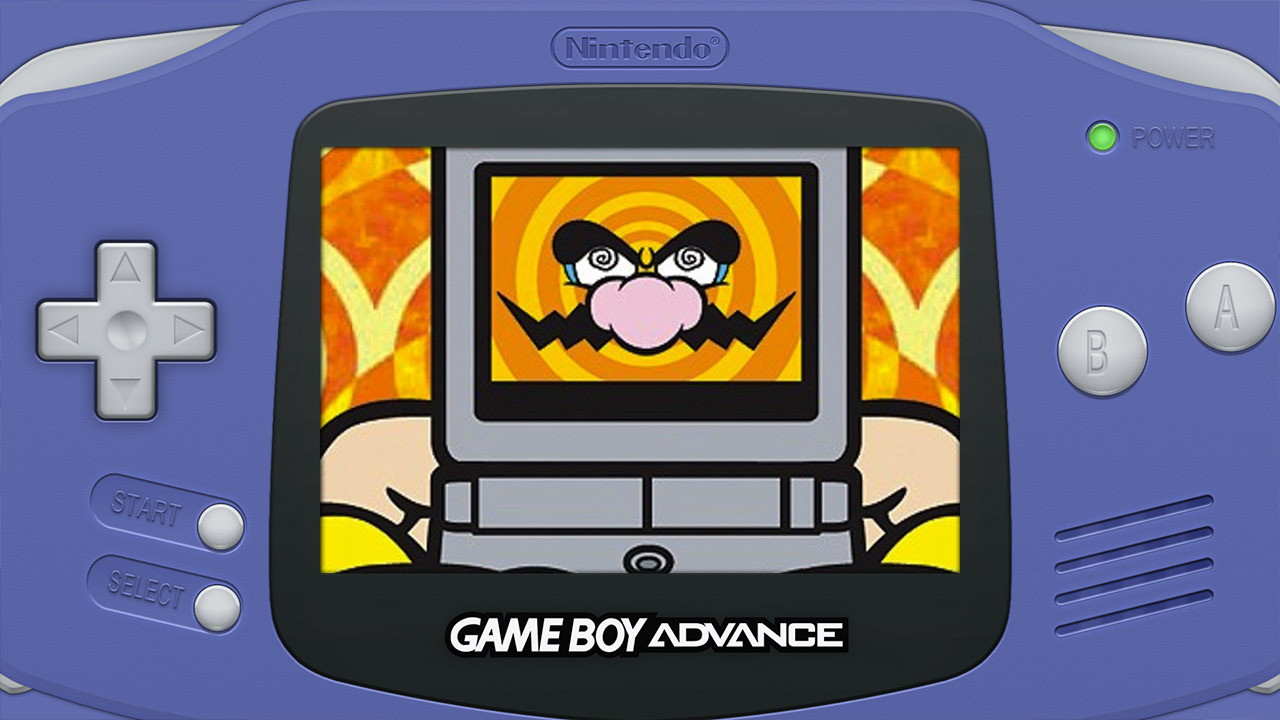 WarioWare Twisted
WarioWare Twisted
The third game about micro-games starring Wario, Mario’s hilarious doppelganger was in his prime with this outing. A gyro sensor in the cartridge made each digestible micro-game that much more fun to play, providing the signature twisting excitement that the box art delivered. Immaculately presented with Wario’s bizarre art design, the third time was the charm with this collection of quirky games.
Wario Land 4
 Wario Land 4
Wario Land 4
In the 2000s, Wario had finally stepped out of the shadow of Mario and begun forging an identity for himself as Nintendo’s mascot for weird, wonderful, and wacky games. Wario Land 4 is no different, as between superb platforming segments there was a clever selection of bonuses that could be uncovered with a return to each stage. While it may have looked like a smaller game at first, Wario Land 4’s modest stages were packed with extra detail, providing substance and style in each.
Read our Wario Land 4 review.











